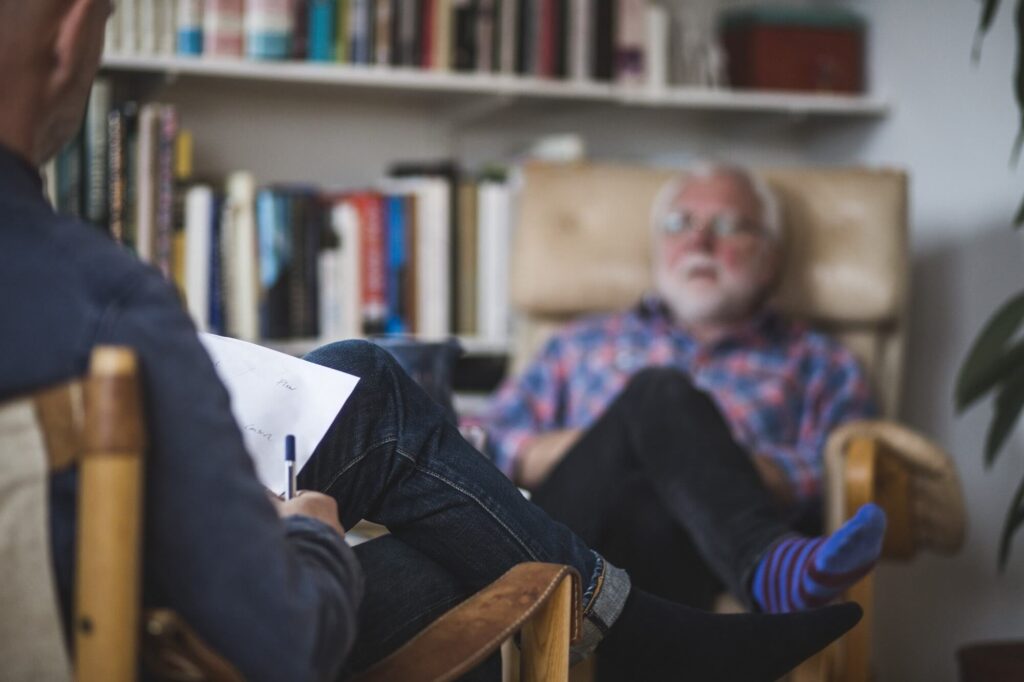
Cognitive behavioral therapy, or CBT, illuminates the links between thoughts, emotions, and behaviors. There are several different CBT techniques that can help reframe negative thinking patterns into more positive ones.
While the past is certainly relevant, CBT focuses on giving you the tools to solve your current problems. And there are many ways to get there with this type of therapy.
Here’s a look at some of the techniques used in CBT, what types of problems they address, and what to expect with CBT.
What Techniques Are Used With CBT?
The key principle behind CBT is that your thought patterns affect your emotions, which in turn can affect your behavior.
For example, CBT highlights how negative thoughts can lead to negative feelings and actions. But, if you change your thoughts to a more positive one, it can lead to more positive feelings and helpful behaviors.
Your therapist will teach you how to make changes that you can implement now. These are skills that you can continue to use for the rest of your life.
Depending on the problem you are dealing with and your goals, there are several ways to approach CBT. Whichever method your doctor chooses, it will include:
- Identifying specific issues or problems in your daily life
- Becoming aware of unproductive thought patterns and how they can affect your life.
- Identifying negative thinking and changing it in a way that changes how you feel.
- Learning new behaviors and putting them into practice
After talking with you and learning more about the problem you want help with, your therapist will decide the best CBT strategy to use.
Some of the techniques often used with CBT include the following 9 strategies:
1- Cognitive Restructuring or Reframing
This involves taking a hard look at negative thought patterns.
You may have a tendency to overgeneralize, assume the worst, or place too much importance on minor details. Thinking this way can affect your work and become a self-fulfilling prophecy.
Your therapist will ask about your thought processes in certain situations so that you can identify negative patterns. Once you are aware of them, you can learn how to reframe those thoughts so that they are more positive and productive.
For example: “I blew the report because I’m totally useless” could become “That report wasn’t my best work, but I’m a valuable employee and I contribute in many ways.”
2- Guided Discovery
In guided discovery, the therapist will familiarize himself with your point of view. Then they will ask questions designed to challenge your beliefs and expand your thinking.
You may be asked to provide evidence that supports your hypotheses, as well as evidence that does not.
In the process, you’ll learn to see things from a different perspective, especially ones you might not have considered before. This can help you choose a more helpful path.
3- Exposure Therapy
Exposure therapy can be used to combat fears and phobias. The therapist will gently expose you to the things that trigger fear or anxiety, while providing guidance on how to deal with them in the moment.
This can be done in small increments. Ultimately, exposure can make you feel less vulnerable and more confident in your coping skills.
4- Journaling and Thought Records
Writing is a time-honored way to get in touch with your own thoughts.
Your therapist may ask you to list negative thoughts that come to mind between sessions, as well as positive thoughts that you can choose to replace.
Another writing exercise is to keep track of new ideas and new behaviors you’ve implemented since the last session. Putting it in writing can help you see how far you’ve come.
5- Activity Scheduling and Behavioral Activation
If there’s an activity you’ve been putting off or avoiding because of fear or anxiety, putting it on your calendar can help. Once the burden of judgment is lifted, you may be more likely to follow through.
Scheduling activity can help establish good habits and provide ample opportunity to put what you’ve learned into practice.
6- Behavioral Experiments
Behavioral experiments are commonly used for anxiety disorders that involve destructive thinking.
Before starting a task that usually worries you, you will be asked to predict what will happen. Later, you will discuss whether or not the prediction came true.
Over time, you may begin to see that the predicted disaster is highly unlikely to occur. You’ll likely start with less stressful tasks and work your way up from there.
7- Relaxation and Stress Reduction Techniques
In CBT, you may be taught some progressive relaxation techniques, such as:
- Deep breathing exercises
- Muscle relaxation
- Image
You’ll learn practical skills to reduce stress and increase your sense of control. It can help with phobias, social anxiety and other stressors.
8- Role Playing
Role playing can help you work through different behaviors in potentially difficult situations. Running through possible scenarios can reduce fear and can be used to:
Improving problem solving skills
Gain familiarity and confidence in certain situations
Social skills practice
Aggression training
Improving communication skills
9- Successive Approximation
It involves taking tasks that seem overwhelming and breaking them down into smaller, more achievable steps. Each successive step builds on the previous steps so you gain confidence as you move forward.
What Happens During a CBT Session?
In your first session, you’ll help the therapist understand the problem you’re dealing with and what you hope to achieve with CBT. The therapist will then develop a plan to achieve a specific goal.
The goals should be:
- Specific
- Measurable
- Time-limited
- Realistic
- Achievable
Depending on your situation and your SMART goals, the therapist may recommend individual, family, or group therapy.
Sessions usually last about an hour and take place once a week, although these can vary according to individual needs and availability.
Homework is also part of the process, so you may be asked to complete worksheets, journals, or perform certain tasks between sessions.
Open communication and feeling comfortable with your therapist are important. If you don’t feel completely comfortable with your therapist, try to find a therapist with whom you can connect and open up easily.
Find a therapist who is trained in CBT and has experience treating your specific problem. Check to make sure they are properly certified and licensed.
Are There Any Risks?
CBT is generally not considered a dangerous treatment, although there are some things to keep in mind:
- This is a very individual thing, but in the beginning, some people may find it stressful or uncomfortable to face their problems.
- Some types of CBT, such as exposure therapy, can increase stress and anxiety while you’re working through it.
- It doesn’t work overnight. It takes commitment and willingness to work on new techniques between sessions and after therapy ends. It is useful to think of CBT as a lifestyle change that you intend to follow and improve throughout your life.
Summary
Cognitive behavioral therapy (CBT) is a well-established and effective form of short-term therapy. It is based on the connections between your thoughts, emotions and behaviors and how they can influence each other.
There are many techniques that are used with CBT. Depending on the type of problem you want help with, your therapist will help you figure out which CBT strategy is best for your specific needs.









